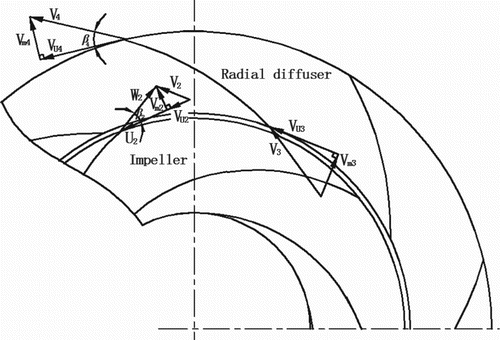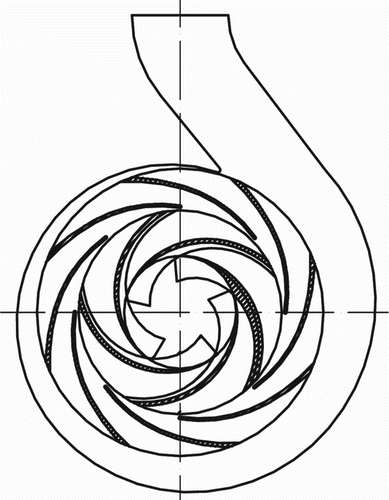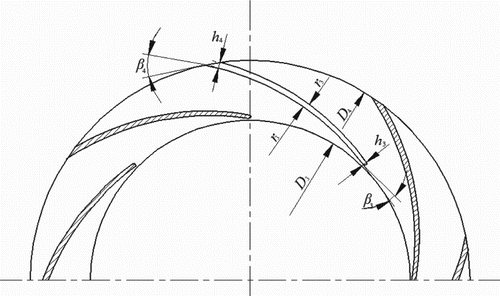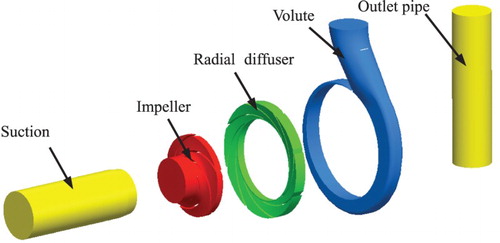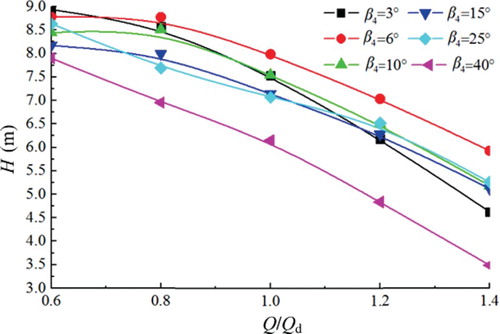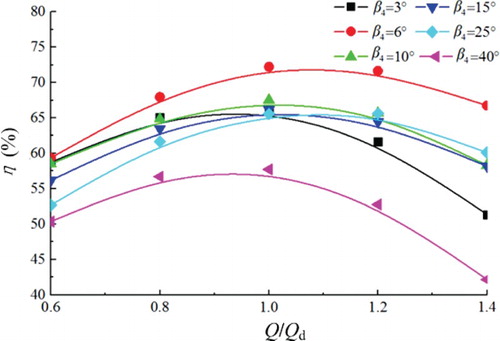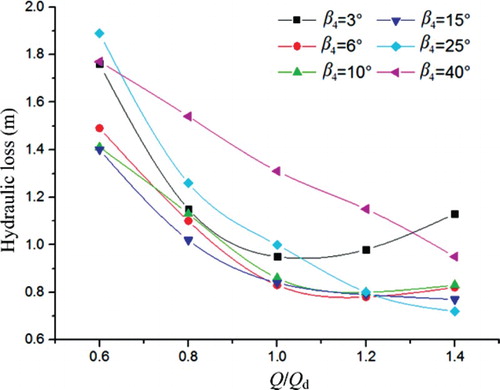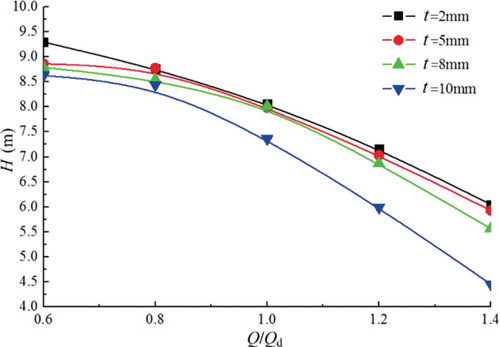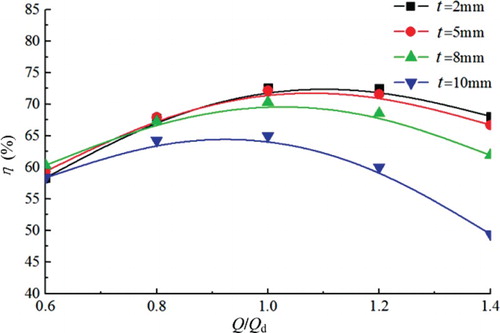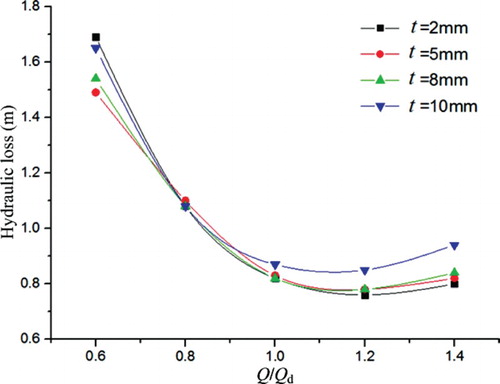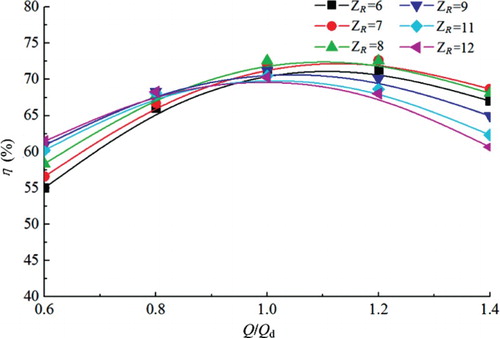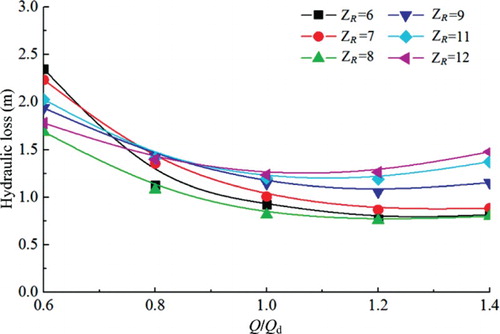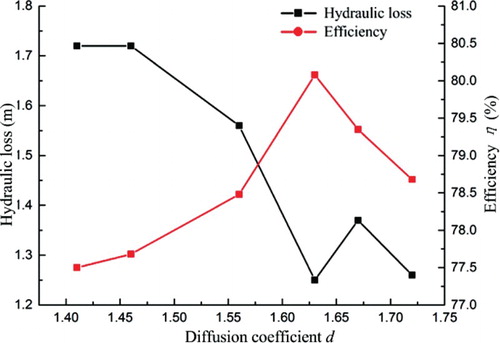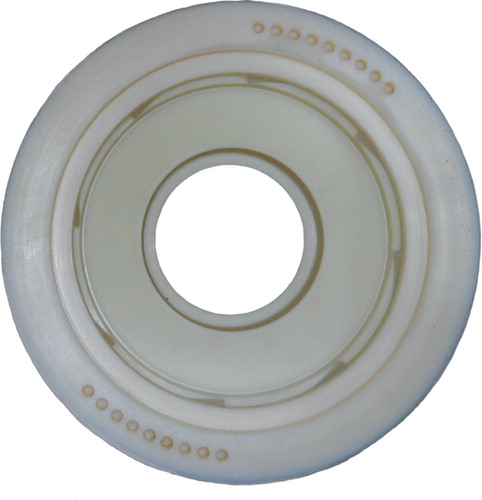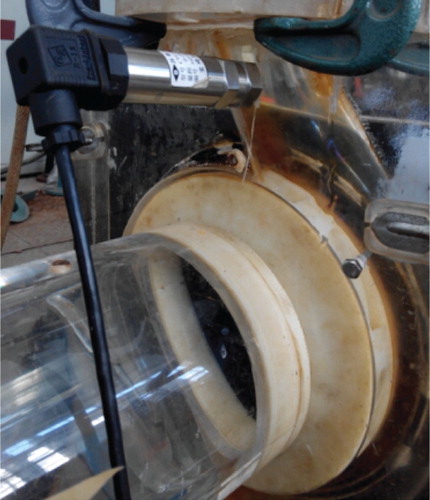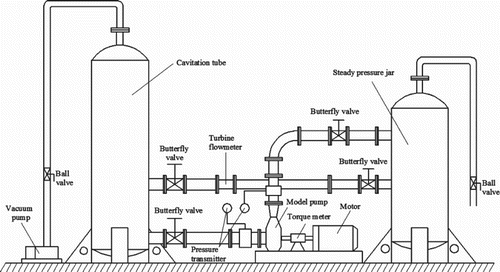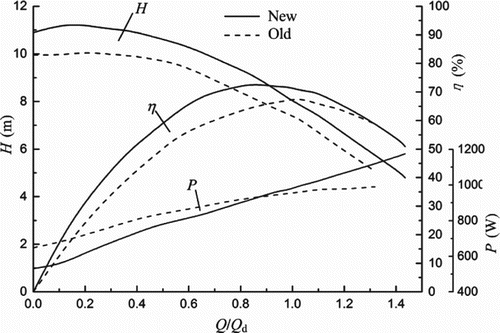Figures & data
Table 1. Main geometric parameters.
Table 2. The independence check of the mesh.
Figure 8. Velocity distribution in the pump middle plane at the design flow rate for: (a) β4 = 3°, (b) β4 = 6°, (c) β4 = 10°, (d) β4 = 15°, (e) β4 = 25°, and (f) β4 = 45°.
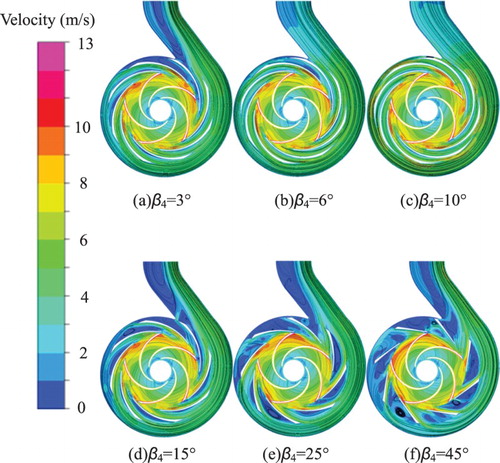
Figure 9. Total efficiency in the pump and the integral hydraulic loss in the radial diffuser and the volute at the design condition.
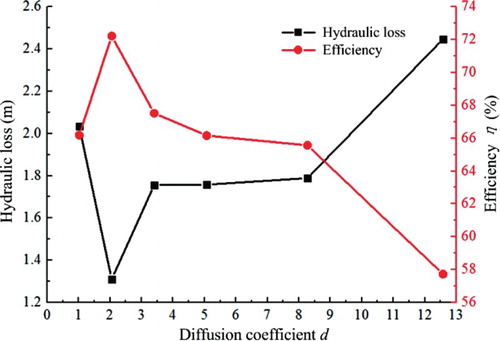
Figure 13. Velocity distribution in the pump middle plane at the design flow rate for: (a) t = 2 mm, (b) t = 5 mm, (c) t = 8 mm, and (d) t = 10 mm.
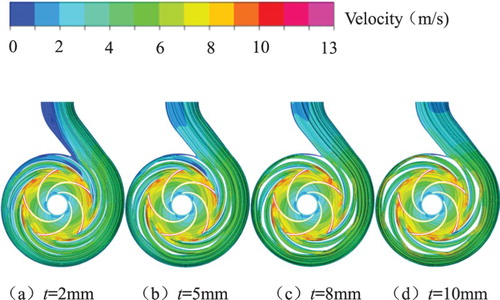
Figure 14. Total efficiency in the pump and the integral hydraulic loss in the radial diffuser and the volute at the design condition.
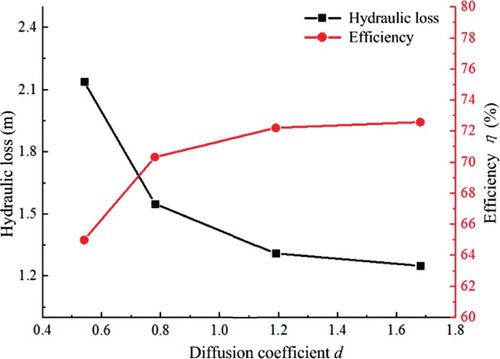
Figure 18. Velocity distribution in the pump middle plane at the design flow rate for: (a) ZR = 6, (b) ZR = 7, (c) ZR = 8, (d) ZR = 9, (e) ZR = 11, and (f) ZR = 12.


